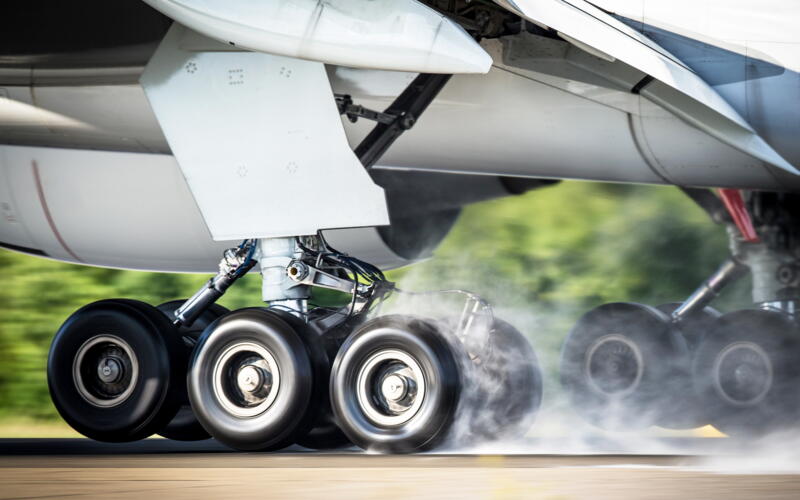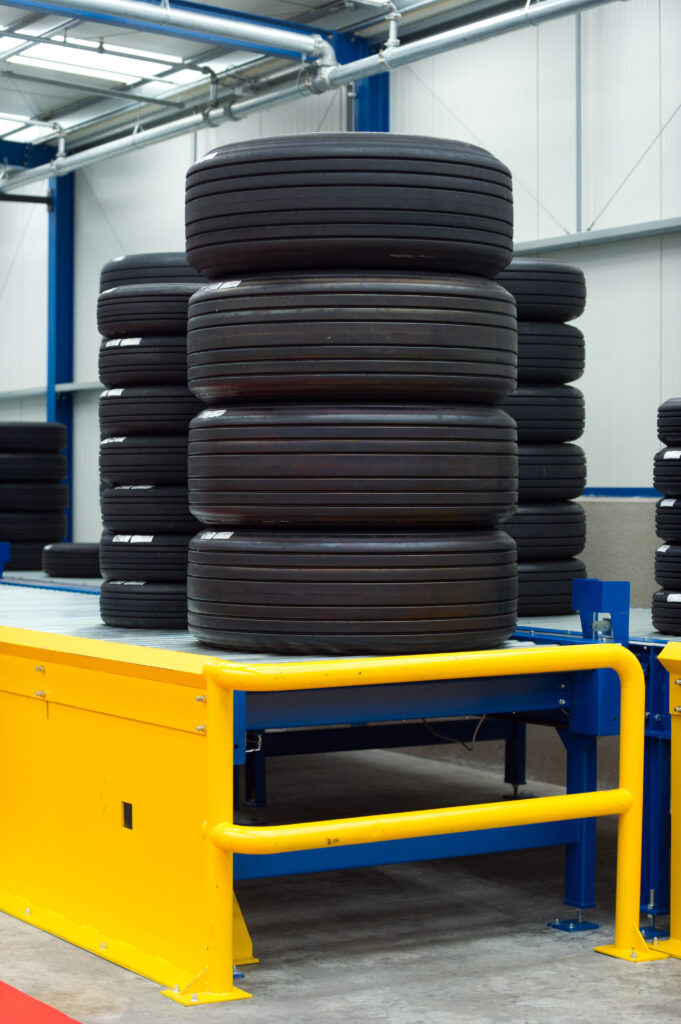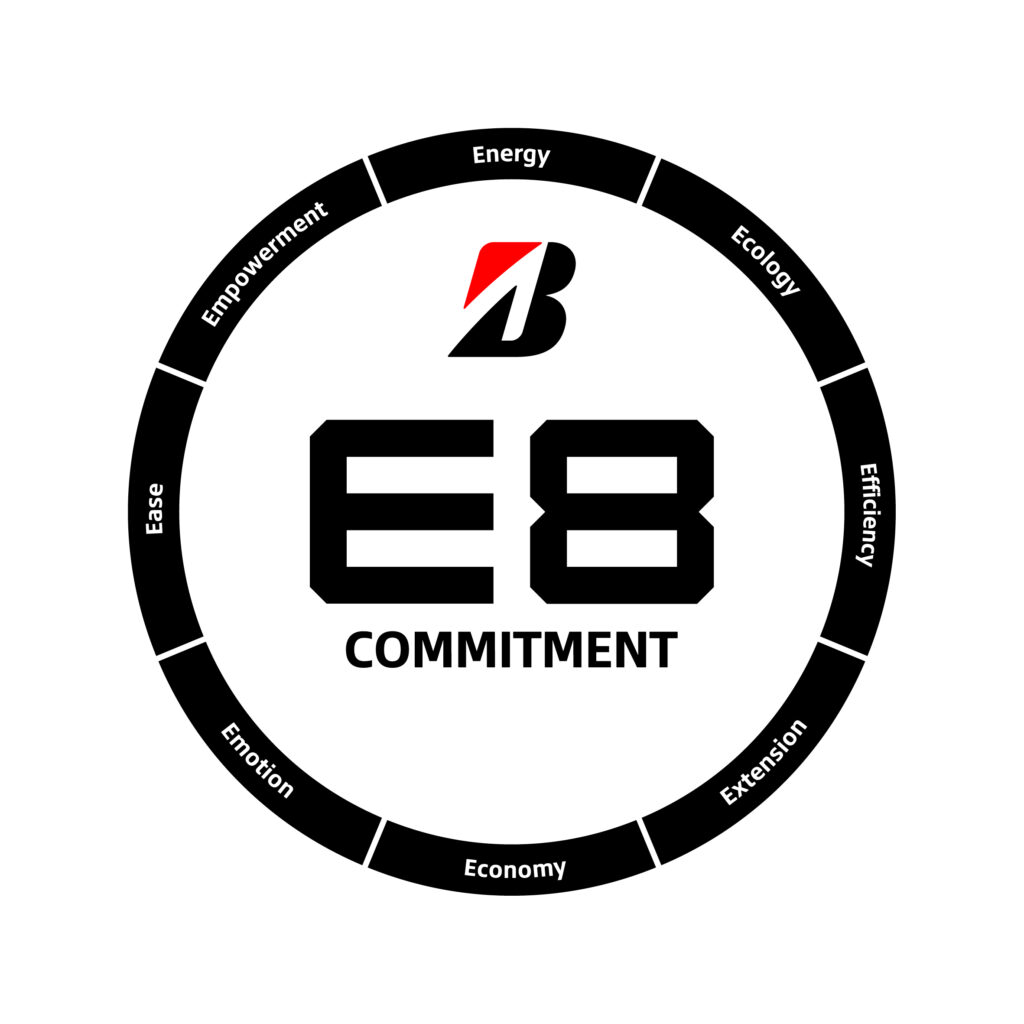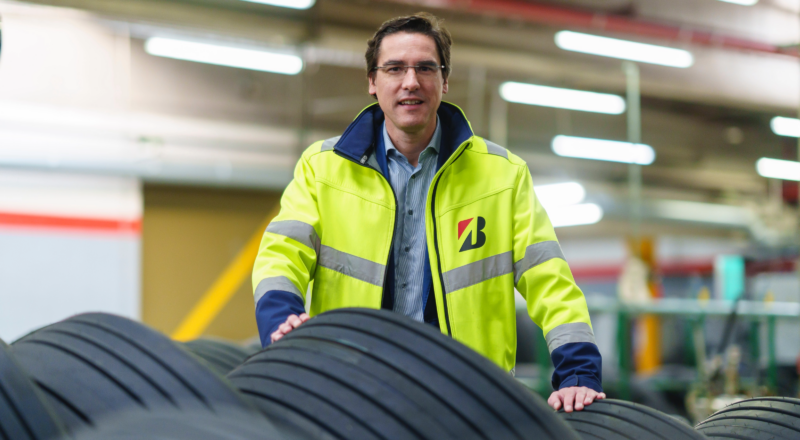Based in Frameries, Belgium, Bridgestone Aircraft Tire Europe manages Bridgestone’s commercial aircraft business in Europe, the Middle East and Africa.
Jean-Philippe Minet, Managing Director of Bridgestone Aircraft Tire Europe, opens the doors of his factory, recently recognized ‘Factory of the Future!’

Based in Belgium, Bridgestone Aircraft Tire Europe covers all of Bridgestone’s commercial aircraft activities for the Europe, Middle East, and Africa region. The company offers mobility packages: new tires, retreaded tires and a complete portfolio of services and solutions (training, aftersales, etc.).
What does the ‘Aircraft’ business represent for the international Bridgestone Group?
Our activity currently represents just a few percent of the group’s revenues, but the ‘Aircraft’ division is considered strategic because we are in a sector of activity that is very advanced in terms of safety, certification, etc. This experience benefits the group’s other business segments.
At the same time, Bridgestone’s Aircraft market is set to double over the next 20 years. The demand is there, and we are ready!
Who are your customers?
Our new tires are approved and delivered directly to the major aircraft manufacturers (Airbus, Boeing, Embraer, etc.). The Bridgestone Group’s R&D teams work in close synergy with these major players to develop the tires that will equip the new generations of aircraft.

In terms of business volumes and revenues, airlines are our main customers.
Bridgestone manages, supplies, and maintains aircraft tires. Most of our offers are of the ‘leasing’ type; the tires remain our property and the customer rents a sort of mobility service by paying according to the landings made and not the quantity of tires consumed.
Of course, we also work for MROs (Maintenance, Repair and Overhaul).
Do you retread Bridgestone tires or are you a multi-brand retreading factory?
We no longer retread competitor’s tires because the latest materials used are only qualified for Bridgestone casings.
We don’t always realize it, but the tire is the part of the aircraft that must be changed most often! Jean-Philippe Minet, Managing Director of Bridgestone Aircraft Tire Europe
💡 Did you know? 💡 Aircraft tires are subject to a lot of stress and many factors come into play when we talk about the life of a tire! It depends, for example, on the position of the tire on the aircraft, the type of runway, meteorological factors, etc. And it’s not necessarily the landing phase that consumes the most rubber, but rather the taxiing phase. Depending on the airport, an aircraft can travel between 3 and 10 km before reaching the runway or parking area and with loads close maximum MTOW before take-off, the aircraft’s tires suffer enormously[1].

How is quality control carried out on a ‘retreaded’ tire?
A tire can be retreaded up to 6 times! Retreading has the advantage of saving natural resources and increasing a tire’s lifespan. An absolute necessity at a time when sustainability is no longer an option!
It is estimated that Bridgestone aircraft tires sold by Bridgestone Aircraft Tire Europe are currently 75% sustainable, thanks to the high level of recycling via the retreading process and the use of natural rubber. During a retreading operation, Bridgestone recovers the tire casing and uses natural rubber compounds, a renewable resource with amazing recyclability.

The casings to be retreaded are subject to very strict controls. These checks are carried out using specific instruments and technologies and are subject to meticulous inspection by highly qualified staff.
You mention ‘open innovation’. What exactly do you mean?
Bridgestone collaborates with players in the field of technological innovation. For example, we are working on the development of a POC that uses artificial intelligence to improve quality control. This project is still in development.
The right tire in the right place at the right time.
One of our strengths is the strong integration of the upstream and downstream supply chain. Jean-Philippe Minet, Managing Director of Bridgestone Aircraft Tire Europe
At Bridgestone, we systematically start from the customer’s needs. In aviation, every tire is unique and has its own certificate.
When we deliver our tires, customers must be able to identify and record all the tires they receive. To avoid human error and save valuable time, Bridgestone has developed ‘easytrack’, a tire tracking solution for airlines and MROs. The application also enables Bridgestone to optimize its supply chain, operations, and procedures (turnaround time).
Bridgestone Aircraft Tire Europe received the award Factory of the Future ’24
Bridgestone Aircraft Europe is one of the companies considered to be the most advanced and prepared for tomorrow’s challenges.
We applied for the Factories of the Future label to have our organization assessed by a panel of independent experts. This enabled us to measure our level of technological maturity as well as the company’s progress in areas such as sustainability and employees empowerment.

We use digital technologies to ensure the traceability of our products and automate low-value-added tasks such as handling and storage. We also automate certain processes that are too heavy or dangerous to relieve our operators.
What are your company’s development priorities for the coming years?
If I must choose one, it’s clearly sustainability! We need to keep improving. This sustainability is reflected in the E8 Commitment, which Bridgestone has launched globally, and which expresses the company’s commitment to society.
E8 consists of eight core commitments: Energy, Ecology, Efficiency, Extension, Economy, Emotion, Ease and Empowerment, which together guide Bridgestone’s strategic priorities, decision-making and sustainability efforts across all operations and business areas.
Bridgestone Aircraft Tire Europe is committed to translating E8 Commitment into very concrete actions and roadmaps that contribute to a more sustainable, efficient, economical, safe, and energy-efficient air mobility that conserves natural resources.

[1] Aircraft tires work under extreme conditions, carrying up to 35 tons per tire and accelerating up to 380km/hour at takeoff, in addition to enduring varied environmental stress when in flight and taxiing.


